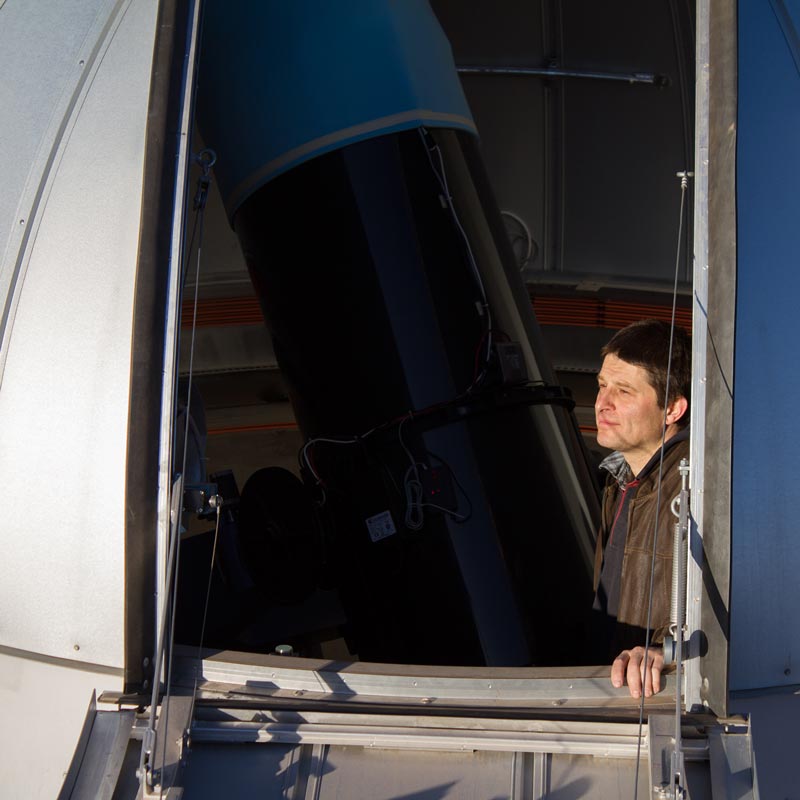Jason Davis • Dec 17, 2019
The Biggest Little Asteroid Observatory
Nestled among some Joshua trees in California's Mojave Desert, about two-and-a-half-hours east of Los Angeles, you'll find a modest cluster of one-room buildings with metal roofs. Each measures 12 by 10 feet, the biggest a structure can get in San Bernardino County without a building permit. The buildings are flanked by a modest house, a two-car garage, and small plot of solar arrays.
About the only indication this nondescript chunk of land has anything to do with space is a yellow "METEOR CROSSING" sign on the garage. There's no clue that the buildings are chock-full of telescopes, or that this small observatory makes big contributions to near-Earth asteroid research.
Welcome to the Center for Solar System Studies, or CS3, a cooperative of 13 research telescopes remotely operated by 5 professional and amateur astronomers. Since 2007, The Planetary Society has awarded CS3 a total of $30,000 through its Shoemaker NEO Grant Program, which helps to find, track, and characterize near-Earth objects and determine which pose a threat to Earth.
Hunting for Dangerous Asteroids Bob Stephens from California tracks and characterizes dangerous near-Earth asteroids. The equipment needed for such a task doesn't last forever. With help from our members, asteroid hunters can upgrade their equipment to make sure we find asteroids before they find us.
"For 22 years, Planetary Society Shoemaker NEO Grants have helped small observatories like CS3 make big contributions to protecting the Earth from asteroid impacts," said Planetary Society Chief Scientist Bruce Betts.
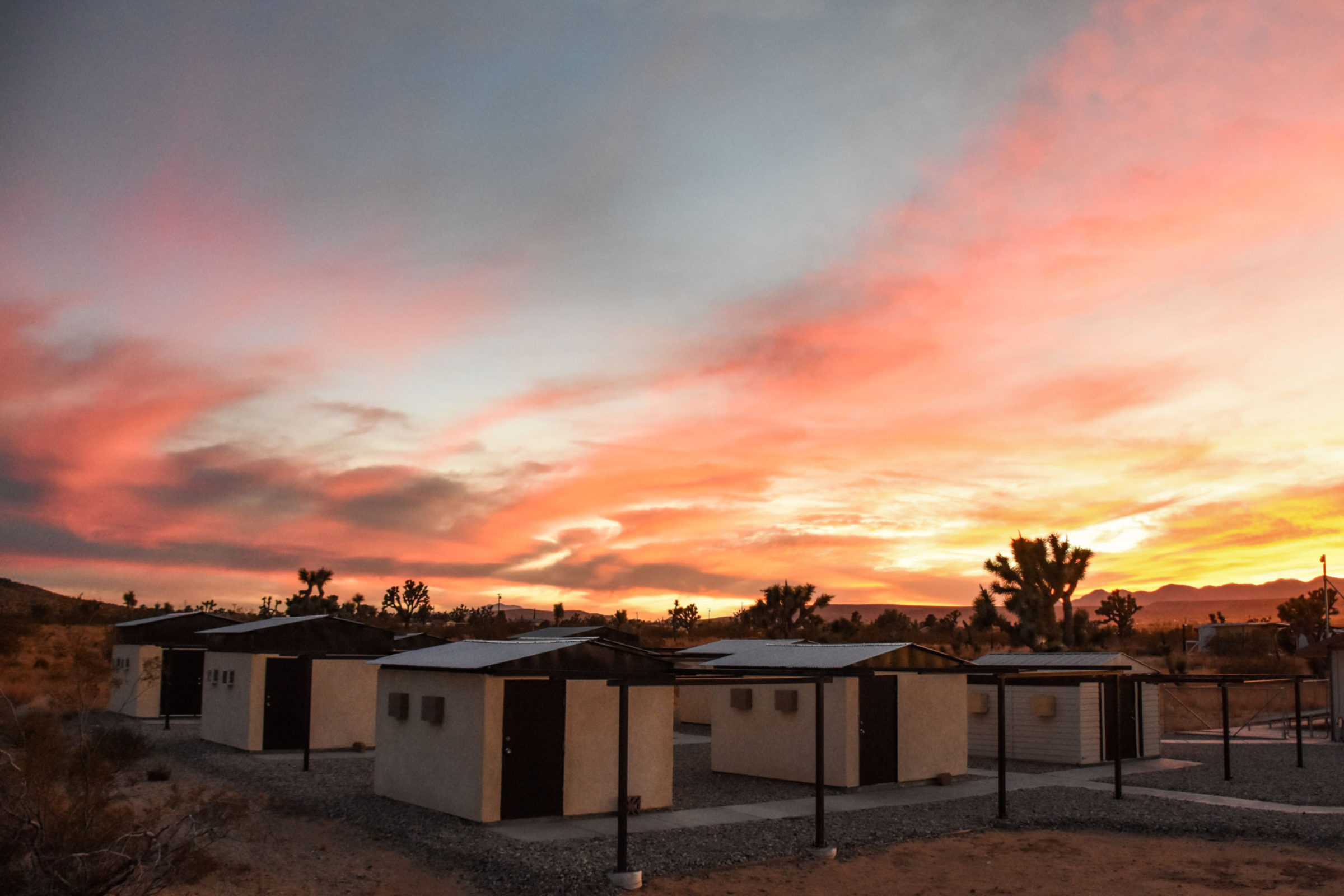
While scientists think we've discovered most of the space rocks big enough to cause planetwide devastation, only an estimated 40 percent of asteroids 140 meters wide or bigger have been found. A direct hit from an asteroid that size, slightly longer than a football field, could destroy an entire city.
To search for those killer asteroids, professional survey telescopes around the world methodically search the night sky. A new space telescope scheduled to launch as soon as 2024 will speed up the rate of new finds. New asteroids get reported to the International Astronomical Union's Minor Planet Center, and the search continues.
Refining a newly discovered asteroid's orbit and determining whether it will come close to Earth requires follow-up observations. Survey telescopes have to systematically cover the sky, so the follow-up work falls to a loose community of asteroid observers around the world. The community includes professionals funded by space agencies as well as very capable amateurs who usually have day jobs.
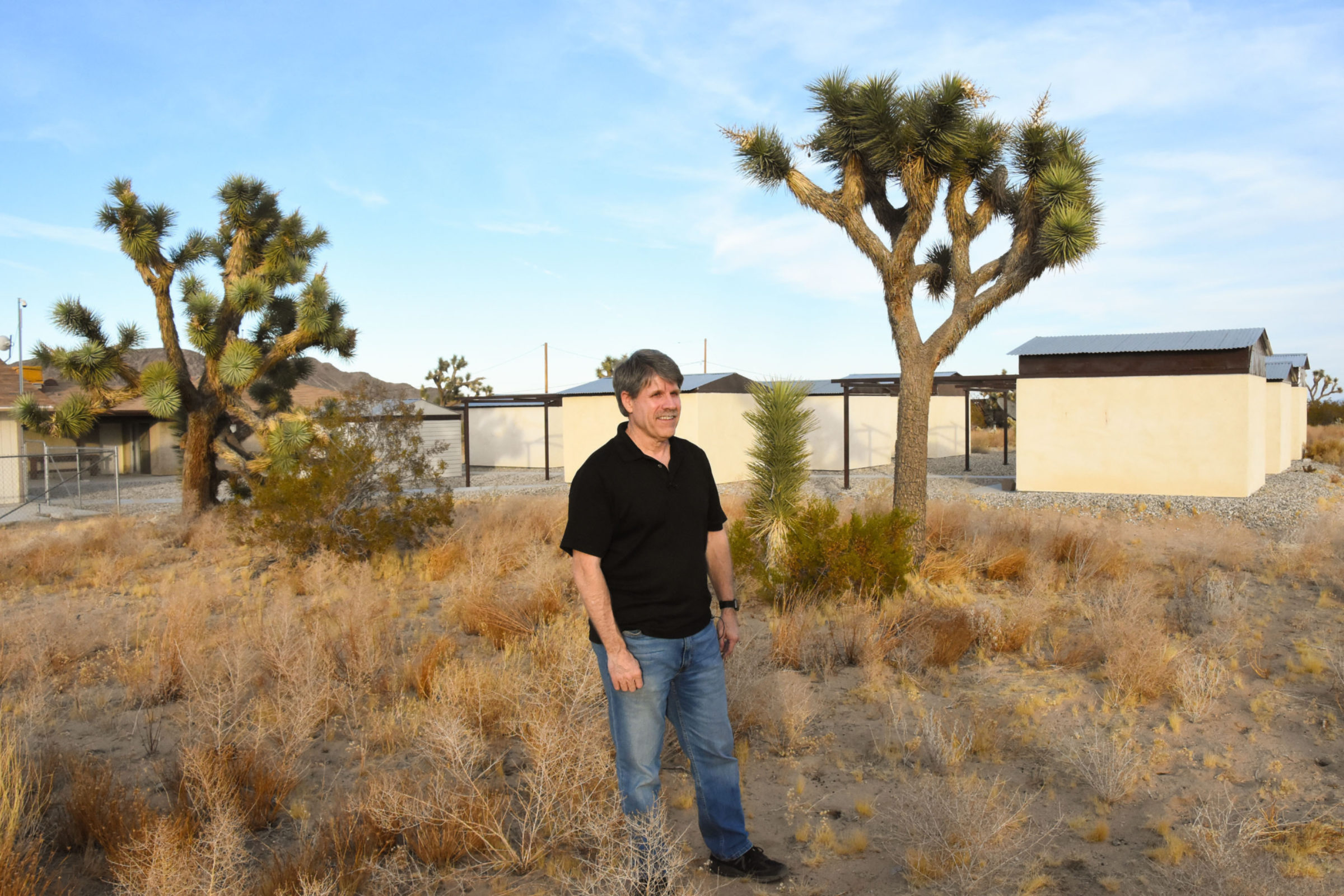
The head of CS3 is Robert Stephens, the co-owner of an accounting firm based in Rancho Cucamonga, California. Stephens recently gave The Planetary Society a tour of the CS3 facilities near Joshua Tree National Park, where the skies are dark and the air is dry—an ideal spot for observing. He unlocked one of the buildings, revealing two stout telescopes mounted to a concrete floor.
"We don't worry about how it looks," he said, wiping some desert dust off the barrel of one telescope. "How it works is what's important."
How it works is impressive: the telescopes are connected to a dizzying array of electronics that enable Stephens to control them from anywhere in the world, including in at least one instance from a preseason Los Angeles Lakers basketball game. There are laptops, battery backups, monitoring cameras, weather instruments, and surge protectors, all of which are programmed to operate on a schedule and can shut down gracefully in the event of a power failure. A pair of air conditioners—programmed via a thermostat and remotely operable, of course—keeps the equipment cooler than 90 degrees Fahrenheit (32 degrees Celsius) when summer temperatures soar.
All 9 observatory buildings are set up similarly, and have roll-off roofs that close automatically in the event of a sudden rain shower. Stephens says it took him and his CS3 colleagues about 4 years to get everything built and tweaked properly. In the process, they taught themselves some new skills, like welding and building construction.
"We learned from the school of hard knocks," he joked.
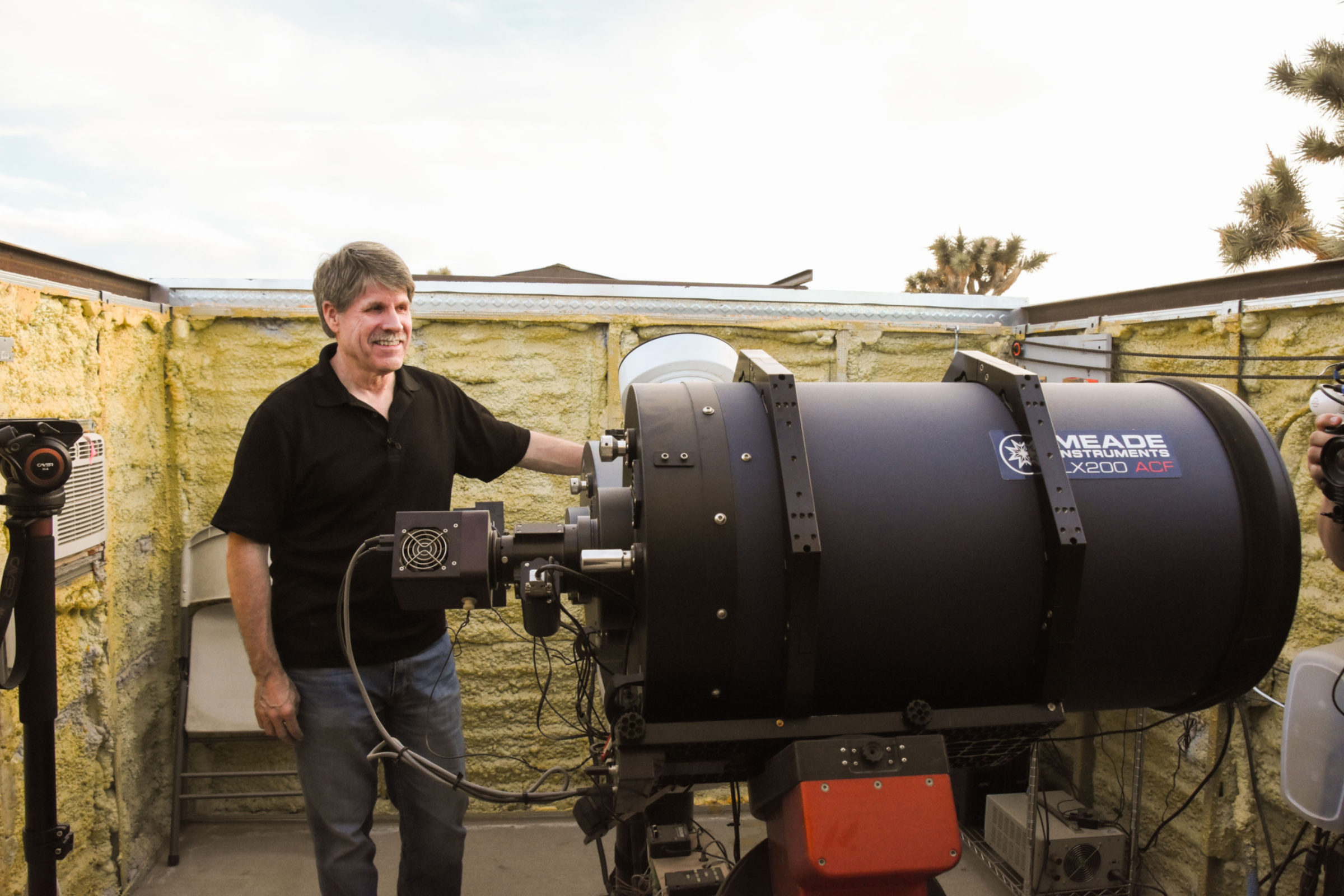
Stephens' interest in the night sky dates back to the 1970s, when he was in college pursuing an accounting degree. After following the lead of a friend and joining the Riverside Astronomical Society in Southern California, he experimented with astrophotography and observing variable stars. He put his hobby on hold during the 1980s to start a family and his accounting practice.
His enthusiasm for astronomy re-ignited in the 1990s with the proliferation of charge-coupled devices, or CCDs, digital camera sensors that can collect photons during long telescopic exposures of the night sky. With the help of CCDs, amateurs could record objects too faint to see with their own eyes through their telescopes—without the hassle of developing film. Stephens got back into his old hobby, and a friend took him on a tour of Palomar Observatory northeast of San Diego. There, he met Carolyn Shoemaker and David Levy, two of the three astronomers who found comet Shoemaker-Levy 9, which slammed into Jupiter in 1994. Shoemaker and Levy were preparing for an observing run, and Shoemaker asked Stephens if he wanted to see the photographic plates used to discover Shoemaker-Levy 9.
"I said, 'Well, yeah—they aren't in the Smithsonian?' And she said, 'Oh, no, I've got them right here.' And she pulls them out of her purse," Stephens said.
He joined Shoemaker and Levy for dinner at one of the small houses reserved for astronomers on the mountain, and when the group returned to the telescope, they found Stephens' car had been locked inside the observatory gates.
"I guess you're spending the night, huh?" he recalled Shoemaker saying. That he did, helping the two astronomers observe asteroids.
The Planetary Society works to defend our planet by advocating to policymakers, educating the public, and supporting the work of astronomers who find and track near-Earth objects. Join today and help us reduce the risk of dangerous asteroid impacts.
Become A MemberThe experience led him to a 1999 conference at Lowell Observatory in Flagstaff, Arizona that promised to train amateur astronomers how to hunt for near-Earth asteroids. There, he met Alan Harris, who was at the time a senior research scientist at NASA's Jet Propulsion Laboratory. Harris described how amateur astronomers could aim their telescopes at an asteroid for hours at a time to collect light curves, which are plots of the brightness of the light reflected from an asteroid as it sails through space. Analysis of light curves can reveal whether an asteroid is single or binary, how fast it's rotating, and whether it's a solid chunk of rock or a loosely assembled pile of rubble.
Turning light curves into actionable data is no easy task. Fortunately, the conference also featured Brian Warner, a then-amateur and now-professional astronomer who wrote a software package called Canopus to do the work automatically. Today Canopus is the world's most commonly used software package for asteroid analysis.
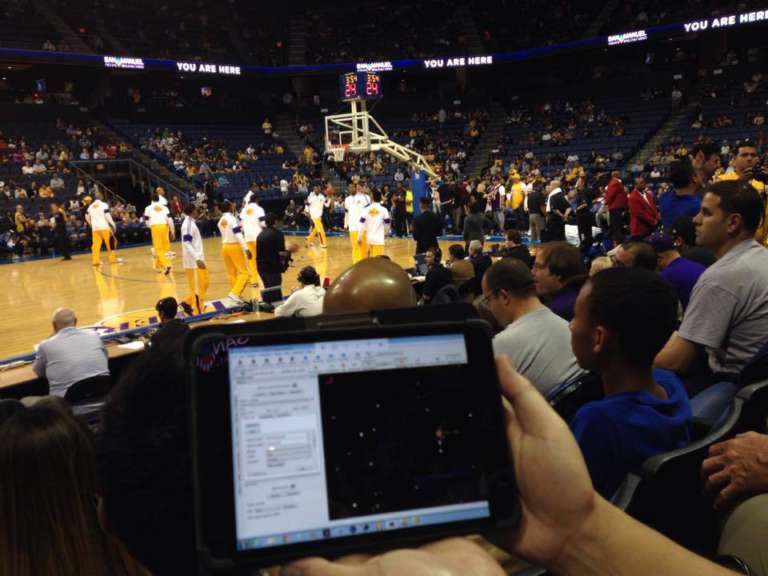
Armed with Canopus, Stephens began observing asteroids at a dark-sky site owned by the Riverside Astronomical Association in Landers, California. By then, Harris had retired from JPL, and was conducting asteroid research with Warner, who had a small observatory north of Colorado Springs. Thanks to grants from NASA and the National Science Foundation managed by the Boulder, Colorado-based Space Science Institute, Warner left his day job as a software engineer to become a professional astronomer. In 2007 he won a Planetary Society Shoemaker Grant to buy a new telescope.
Harris and Warner soon decided it would be more efficient to manage the grants themselves, but to do so they needed to form their own company. Fortunately, they knew an accountant who could help: Bob Stephens. The trio founded a company called MoreData!, and by 2010 had transferred Harris and Warners' grants there.
Meanwhile, Stephens was producing impressive observing results from Landers. He soon outgrew the Riverside Astronomical Association site, and decided to purchase a nearby 5-acre property in 2011. Warner relocated his own telescope equipment there to take advantage of the better observing conditions, and thus was born the Center for Solar System Studies, or CS3. In 2013, the year CS3 officially came online, Stephens won a Planetary Society Shoemaker NEO Grant to buy a new CCD camera for his 0.4-meter telescope. Several other astronomers soon co-located to the site for asteroid research and other purposes, including Daniel Coley, who won Planetary Society grants in 2015 and 2018, both for new CCD cameras.
Since CS3 saw first light in 2013, its telescopes have collected more than 900 light curves from close to 750 near-Earth asteroids. That's about 60 percent of the worldwide total during that same period.
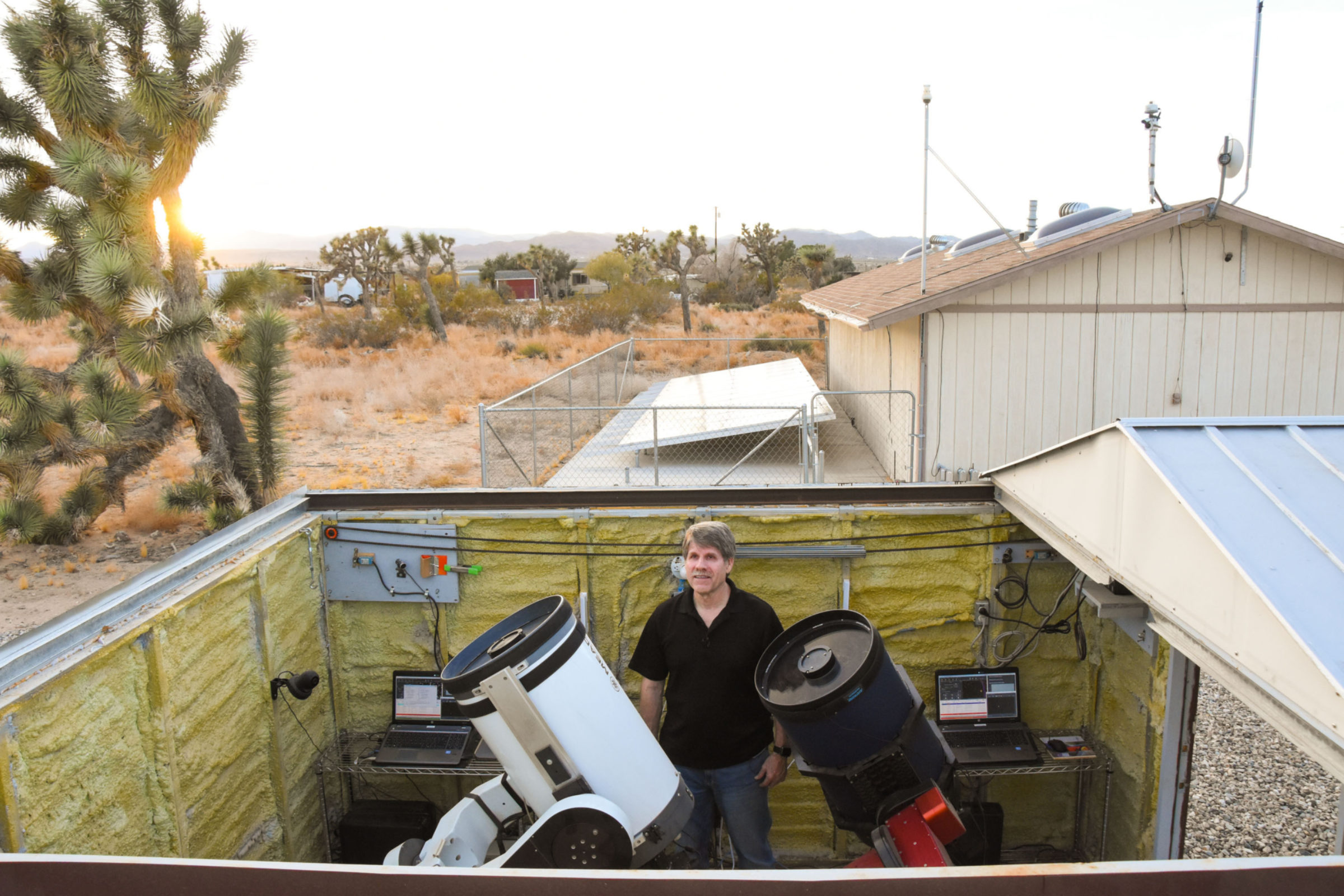
Lately, Warner and Stephens have been doing research on so-called super-rotating asteroids. From Earth, it's difficult to tell whether an asteroid is just a loose pile of rocks barely held together by gravity, or a single, monolithic object. One way to know for sure is how fast the asteroid is spinning. Rubble-pile asteroids fly apart if they spin too fast; the threshold is about 2.2 hours per rotation, Stephens said. CS3 has found almost a quarter of the known super-rotating asteroids that spin faster than that.
CS3 has an average of 280 clear nights per year, but on the afternoon The Planetary Society visited, a thick layer of clouds rolled in. Fortunately, there was a consolation prize: as the Sun set behind a row of mountains in the west, the sky turned shades of yellow, orange, red, and purple. Nearby Joshua trees became black silhouettes against the colorful darkening sky.
Stephens is in the process of retiring from his accounting firm. He plans to focus more on his work at CS3, and is starting to consider his legacy, with a growing focus on easing the way for future generations of asteroid researchers. Defending the Earth from asteroids is a team sport. Sometimes asteroids pop up, get cataloged and observed, and then fade back into the depths of space, only to be re-discovered decades later. Every observation teaches us more about asteroids, and helps with planetary defense.
"A lot of what we do is make sure we're preserving the data so that it's going to be available for future generations," Stephens said. "Somebody 50, 100 years from now, in theory, can take that and use it for something."
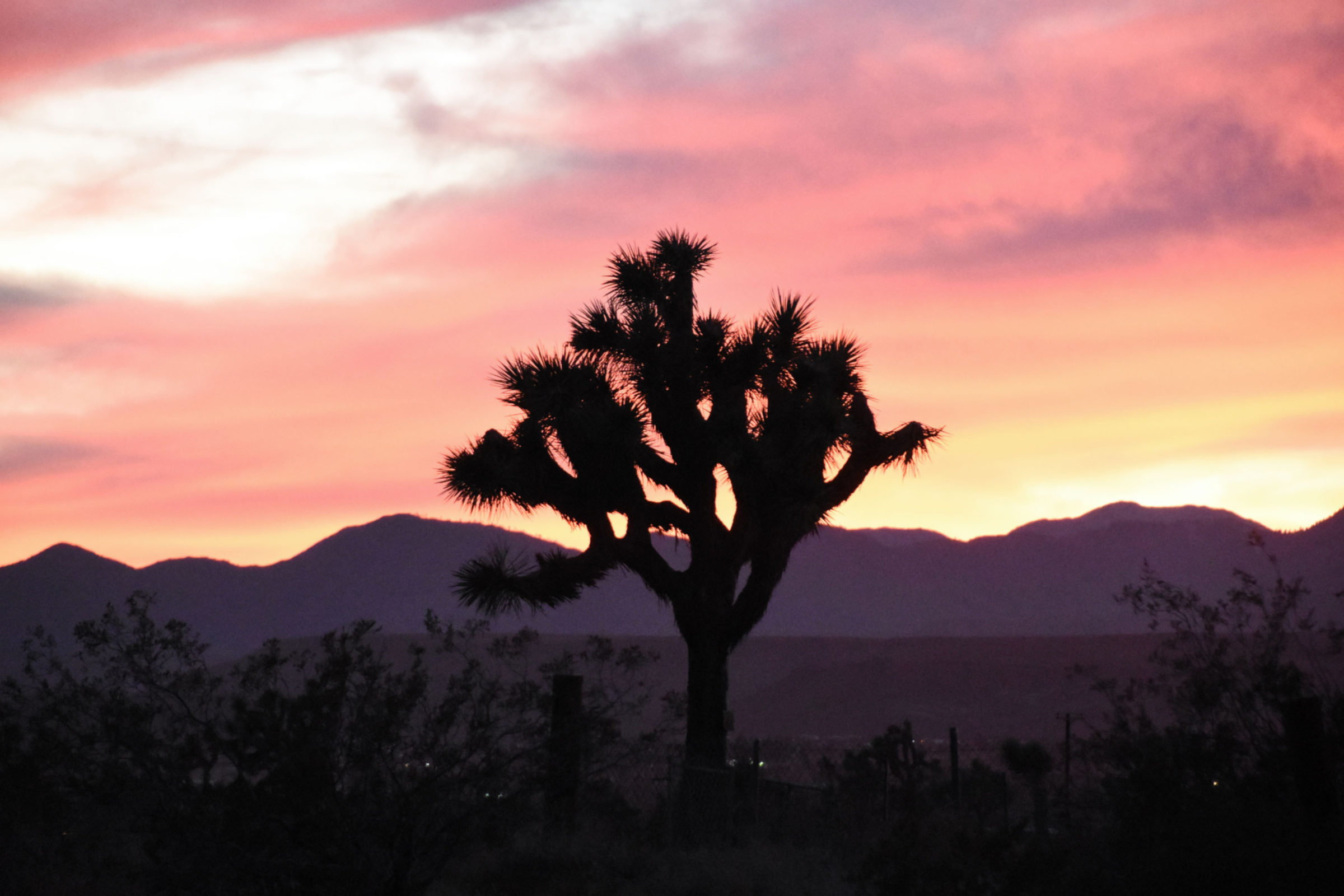
Support our core enterprises
Your support powers our mission to explore worlds, find life, and defend Earth. You make all the difference when you make a gift. Give today!
Donate

 Explore Worlds
Explore Worlds Find Life
Find Life Defend Earth
Defend Earth


